ARTICLES: Engraved Gems, Glyptic Art & Intaglio Gemology
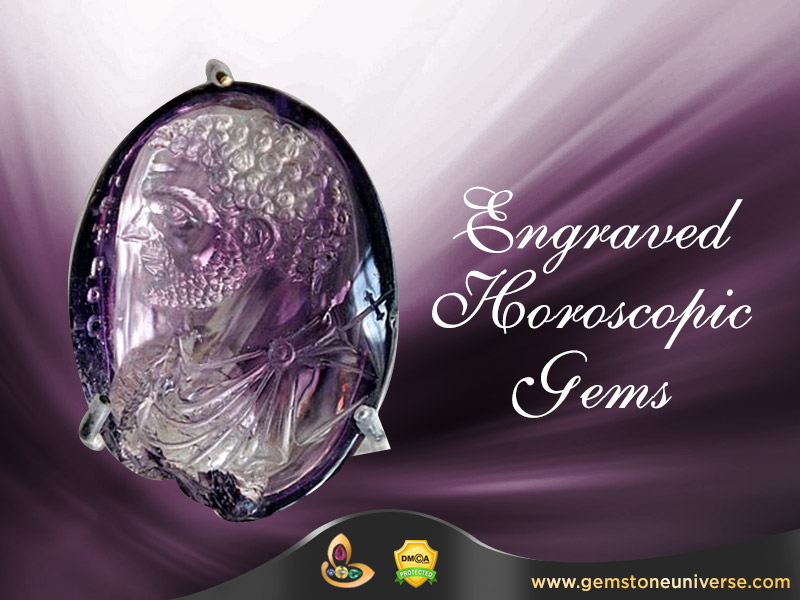
Engraved Horoscopic Gems - Glyptic Art, a class apart!
Engraved Gems, Glyptic Art & Intaglio Gemology
Gemstoneuniverse-The Gold Standard in Planetary Gemology
Glyptic Art, a class apart
That gemstones have fascinated human beings from the earliest times is a well-known fact. There are enough and more examples that list collectors who have taken tremendous pains and have given enormous wealth to possess some rare pieces. What is relatively lesser known is the fact that the ancients were staunch believers in the astrological potential of the gemstones.
The art of Gem carving is worth more than a note as often times it takes a specialist who has the makings of an artist to painstakingly engrave beautiful images on small surfaces that quite often are brittle. And a mistake in this process would prove to be quite a costly affair as gemstones are expensive.
There are many specimens of glyptic art that have been preserved till date but among them the ones that deserve real study and attention are the ones that have horoscopic detail included. The most famous examples known are described by George Frederick Kunz (incidentally this master of gems is also famous for discovering a new variety of pink spodumene, which was subsequently named after him- Kunzite ) in his book, The Curious Lore Of Precious Stones (1938) .
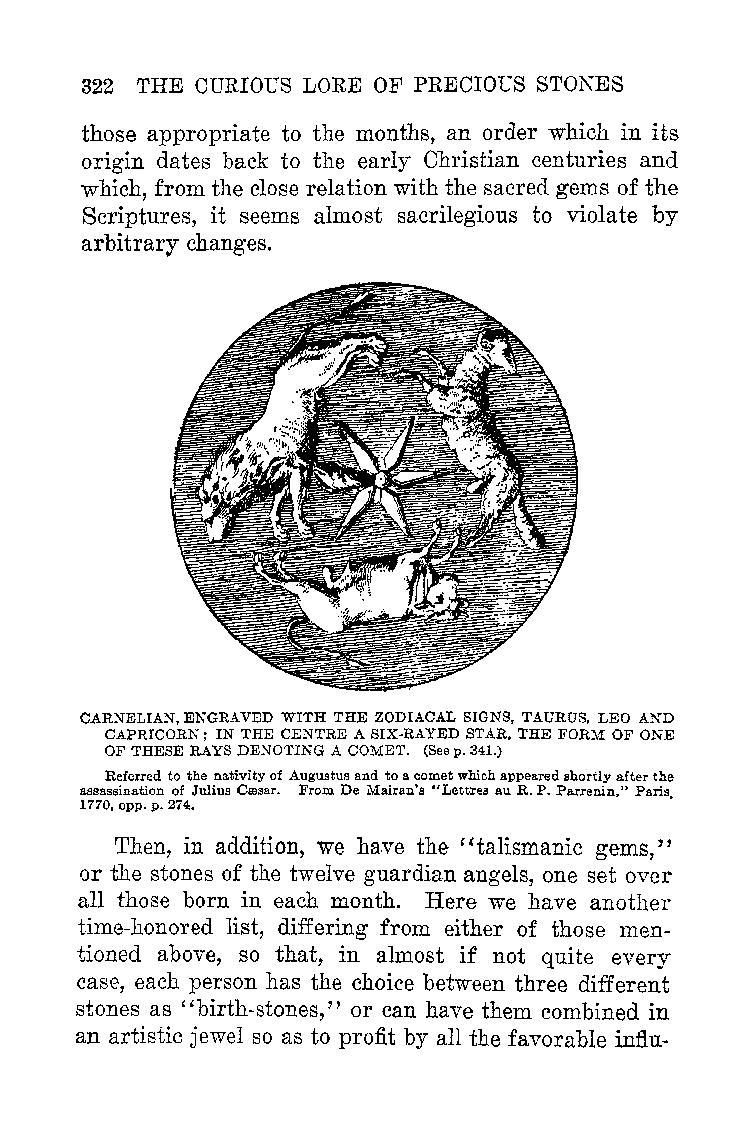 Curious Lore of Precious Stones-George Frederick Kunz
Curious Lore of Precious Stones-George Frederick Kunz
In this book, there is a mention of letters of M. Mairan who describes a fine carnelian gem engraved a star surrounded by the images of a goat, a bull, and a lion. He sees in the star the symbolic of the splendid comet which appeared shortly after the assassination of Caesar, and which, according to Suetonius, was believed to be the soul of Caesar newly received into the sky; the goat, bull, and lion are the symbols of the zodiacal signs Aries, Taurus, and Leo, the first-named sign referring perhaps to the death of Caesar on the Ides, or fifteenth of March; while the other two signs may allude to the position of the comet at different dates.
Kunz wrote,”Some choice example of astrological gems may be seen in the Metropolitan Museum of Art, New York; among these is a green jasper bearing symbols of Luna, Capricorn, and Taurus. This gem is from the collection of the late Rev. C. W. King, which has been acquired for the Museum, and is described as figuring the horoscope of the owner.
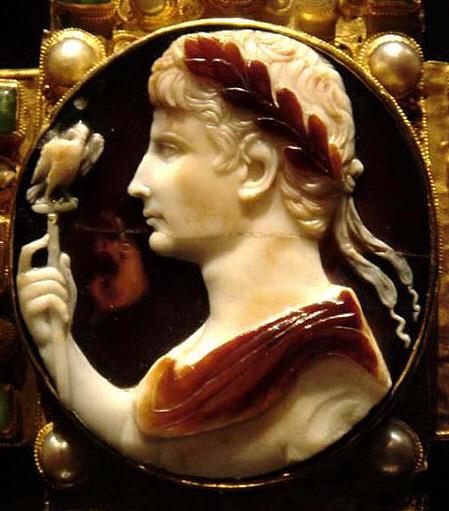 Picture of Augusts in Ancient Roman Cameo
Picture of Augusts in Ancient Roman Cameo
In the same collection is a banded agate engraved with Sagittarius as a centaur, surrounded by the stars of this constellation in their proper order. King states that this was the earliest horoscopical gem known to him. Still another gem of this collection is a sard bearing the symbol of Aries carrying a long caduceus ( The caduceus is the staff carried by Hermes in Greek mythology ); this type appears on the coins of Antioch, because that city was founded in the month over which the sign Aries presides.”
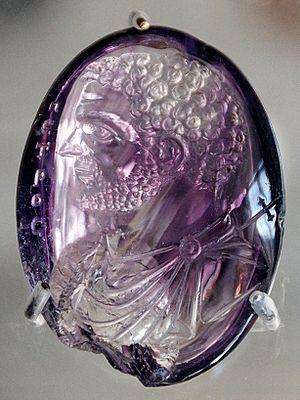 Roman intaglio portrait of Caracalla in amethyst
Roman intaglio portrait of Caracalla in amethyst
There is also the mention of celebrated Gemma Augustea at The Austrian Imperial Collection in Vienna. Above the figure of Augustus, appears the sign of Capricorn, the constellation of his nativity; beneath the figure of Tiberius is engraved the sign of Scorpio, under which that emperor was born. This celebrated cameo, the work of the famous gem-engraver Dioskorides, is mentioned in an inventory of the treasury of St. Sernin, in Toulouse, dated 1246.
Equally interesting and if not older is the tradition of jade carving in china. The rulers of Mughal dynasty in India were known for their partiality towards the Emeralds which they got engraved with prayers and sacred texts. These were then used as personal talismans and amulets. In the ancient Indian system of Navratnas, emerald is considered to be the gemstone of planet Mercury.
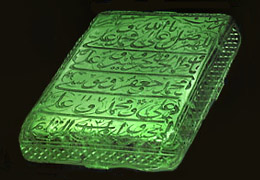 Engravings on an Emerald- These were considered as special Talismans by the Mughal Kings
Engravings on an Emerald- These were considered as special Talismans by the Mughal Kings
There are many more treasures that sit preserved in museums and private collections. The secrecy, the aura of mystery and the exclusivity around them stand testimony to the incredible power that nature packs into the small package called the gemstone!
Picture Credits
1. Roman intaglio portrait of Caracalla in amethyst, once in the Treasury of Sainte-Chapelle, when it was adapted by adding an inscription and cross to represent Saint Peter. Image courtesy Wikipedia
2. Ancient Roman cameo engraved gem of Augustus
3. The Curious Lore of Precious Stones (1938), George Frederick Kunz, Page 322 at the Internet Archives

Abhijita Kulshrestha-PGA/ Consultant Gemstoneuniverse.com
Abhijita Kulshrestha-PGA
Abhijita Kulshrestha is a communications professional and held the position of Research Associate at MICA- Mudra Institute of Communications Ahmedabad before becoming certified Planetary Gem Advisor from PGA Thailand. At present is a consultant at Gemstoneuniverse.com
<p >©1999-2011, Gemstoneuniverse.com, All rights reserved.
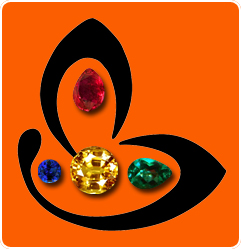
http://www.gemstoneuniverse.com
Gemstoneuniverse-The Gold Standard in Planetary Gemology


